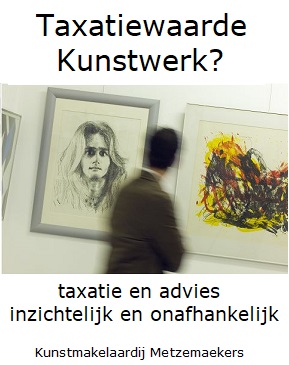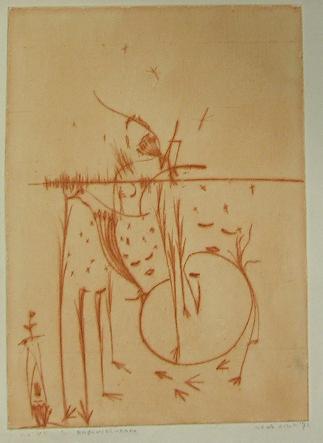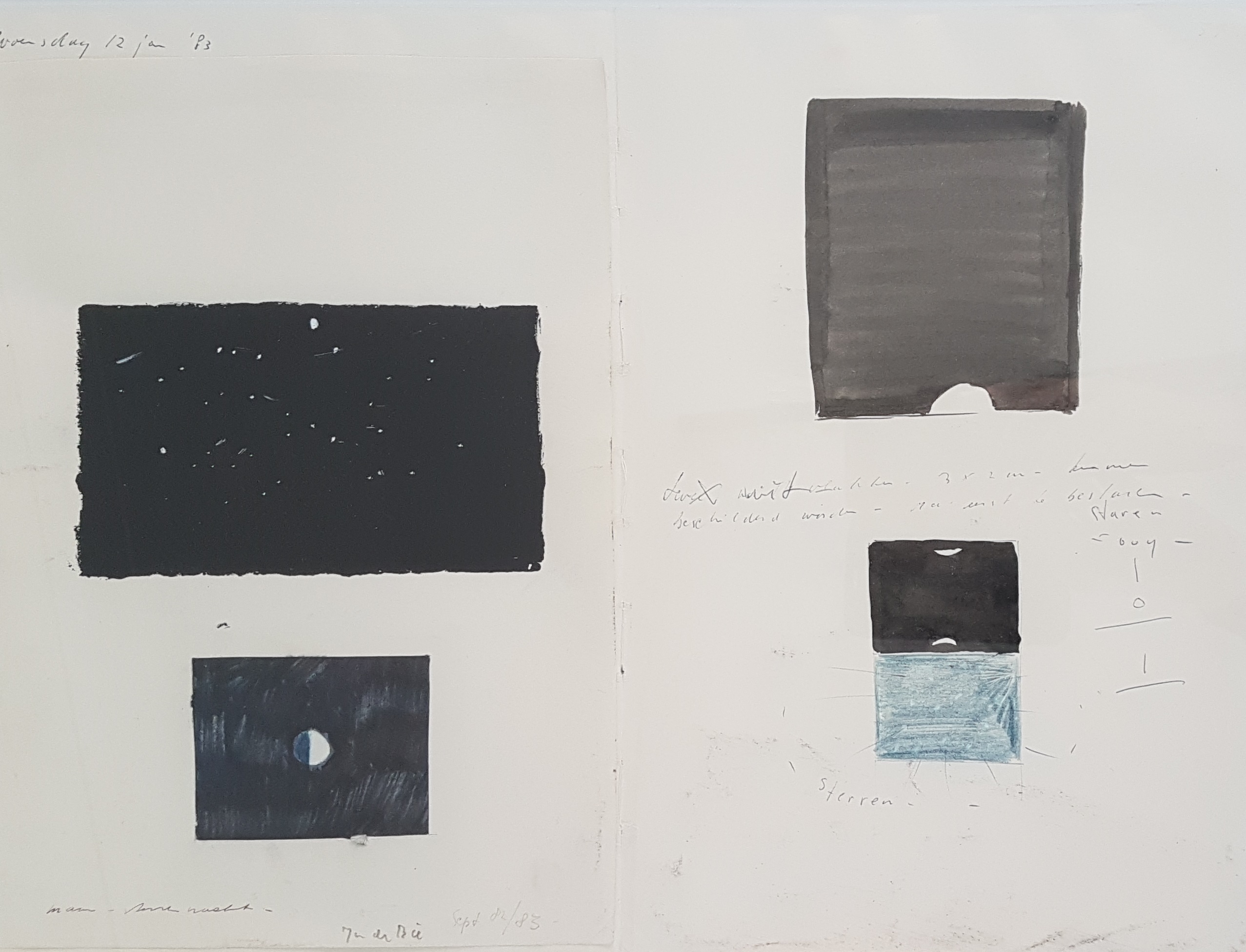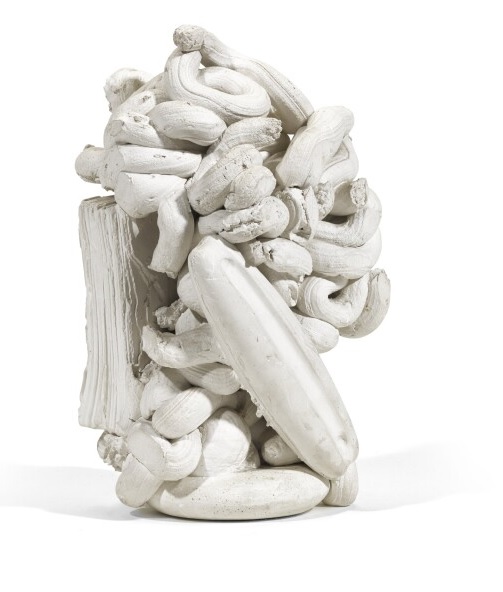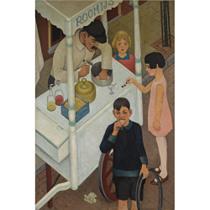
Beschrijving
DESCRIPTION: signed and dated 27. oil on canvas. PROVENANCE: A.M. Gerrits-Focke, Amsterdam. Private Collection, The Netherlands. EXHIBITED: Amsterdam, Stedelijk Museum Amsterdam, De Onafhankelijken, 1928. Amsterdam, Stedelijk Museum Amsterdam, De Brug, 1928. Amsterdam, De Ronde Brug, solo, 1938 Arnhem, Museum voor Moderne Kunst, Magie en Zakelijkheid: Realistische schilderkunst in Nederland 1925-1945, no. 39, p. 158, illustrated in colour. LITERATURE AND REFERENCES: C. Blotkamp and Y. Koopmans a.o., Magie en Zakelijkheid, realistische schilderkunst in Nederland 1935-1945, Zwolle / Arnhem 1999, p.158, illustrated in colour. CATALOGUE NOTE: The beginning of Ger Gerrits' career takes place against the background of the interbellum. The resistance against abstract art on one hand and expressionism on the other had resulted in a new realistic style. From this resistance together with a deep interest in the quickly changing industry and as a result a changing society, the artistic movement Nieuwe Zakelijkheid (New Objectivity) came into being. This Dutch version of the German Neue Sachlichkeit, approaches the world in its creations in a realistic but a (seemingly) objective, emotionless and business like manner. Scenes from working- and middle-class daily life are portrayed in a cool and orderly fashion. Nothing is romanticized or idealized (except for industrial symbols from the modern world) and the painter seems not to comment on the people and their environment. This gives their creations an odd and alienating atmosphere. The objectiveness and alienating atmosphere is very well depicted in the painting offered here for sale. 'Ijskarretje' (Ice Cream Car), dates from 1927. Children buying ice cream is a normal happening, but what is strange in this scene is that the children are doing this in a manner of factly way. The girl to the right is literary very business like ranging her coins for the ice cream seller. The girl, just as the other two children, does not seem excited at all, which is surprising since children generally consider ice cream as a treat and excitement is to be expected. The slightly curved mouth and eyes of the boy are hinting at a little enjoyment but the others, including the ice cream seller are acting aloof. Ger Gerrits knew the children in the scene, two being even cousins, but he portrays them estranged and in an objective way as if he does not know them at all. Another alienating aspect of this scene is the perspective. Gerrits chose a bird's eye perspective view but is not consequent in translating this in his painting according to perspective rules. The hoop and wheel of the car are depicted in a shortened as one would see it when looked upon but the other elements in the scene such as the children, the curb and the ice cream car are depicted from a lower point of view allowing us to see their faces. The face of the girl who is paying for her ice cream is portrayed from the side as if the viewer is on the same level while the rest of her body is viewed from above. The children are positioned in a strictly frontal and in profile way which looks unnatural and gives us the sense that they were copy-pasted in there. This gives the scene an unlikely and flat appearance. One year after this work was completed there was an exhibition in the Stedelijk Museum for the artist movement 'De Onafhankelijken'. Gerrits was represented with three works in this exhibition including the painting offered here for sale. As Gerrits writes in his notes (see below) the exhibition was receiving positive reviews. With the sale of this painting we hope to see a similar appreciation. As it is such an exemplar work of his early years and a rarity on the art market we trust this will be the case.Details
- Databanknummer:
- 49976
- Lotnummer:
- -
- Advertentietype
- Archief
- Instelling:
- Sotheby's
- Veilingdatum:
- -
- Veilingnummer:
- -
- Stad
- -
- Limietprijs
- -
- Aankoopprijs
- -
- Verkoopprijs
- -
- Hamerprijs
- -
- Status
- Verkocht
Technische details
- Kunstvorm:
- Schilder- en Tekenkunst
- Technieken:
- Olieverf
- Dragers:
- Doek
- Lengte:
- 121 cm
- Breedte:
- 81 cm
- Hoogte:
- -
- Oplage:
Beschrijving
DESCRIPTION: signed and dated 27. oil on canvas. PROVENANCE: A.M. Gerrits-Focke, Amsterdam. Private Collection, The Netherlands. EXHIBITED: Amsterdam, Stedelijk Museum Amsterdam, De Onafhankelijken, 1928. Amsterdam, Stedelijk Museum Amsterdam, De Brug, 1928. Amsterdam, De Ronde Brug, solo, 1938 Arnhem, Museum voor Moderne Kunst, Magie en Zakelijkheid: Realistische schilderkunst in Nederland 1925-1945, no. 39, p. 158, illustrated in colour. LITERATURE AND REFERENCES: C. Blotkamp and Y. Koopmans a.o., Magie en Zakelijkheid, realistische schilderkunst in Nederland 1935-1945, Zwolle / Arnhem 1999, p.158, illustrated in colour. CATALOGUE NOTE: The beginning of Ger Gerrits' career takes place against the background of the interbellum. The resistance against abstract art on one hand and expressionism on the other had resulted in a new realistic style. From this resistance together with a deep interest in the quickly changing industry and as a result a changing society, the artistic movement Nieuwe Zakelijkheid (New Objectivity) came into being. This Dutch version of the German Neue Sachlichkeit, approaches the world in its creations in a realistic but a (seemingly) objective, emotionless and business like manner. Scenes from working- and middle-class daily life are portrayed in a cool and orderly fashion. Nothing is romanticized or idealized (except for industrial symbols from the modern world) and the painter seems not to comment on the people and their environment. This gives their creations an odd and alienating atmosphere. The objectiveness and alienating atmosphere is very well depicted in the painting offered here for sale. 'Ijskarretje' (Ice Cream Car), dates from 1927. Children buying ice cream is a normal happening, but what is strange in this scene is that the children are doing this in a manner of factly way. The girl to the right is literary very business like ranging her coins for the ice cream seller. The girl, just as the other two children, does not seem excited at all, which is surprising since children generally consider ice cream as a treat and excitement is to be expected. The slightly curved mouth and eyes of the boy are hinting at a little enjoyment but the others, including the ice cream seller are acting aloof. Ger Gerrits knew the children in the scene, two being even cousins, but he portrays them estranged and in an objective way as if he does not know them at all. Another alienating aspect of this scene is the perspective. Gerrits chose a bird's eye perspective view but is not consequent in translating this in his painting according to perspective rules. The hoop and wheel of the car are depicted in a shortened as one would see it when looked upon but the other elements in the scene such as the children, the curb and the ice cream car are depicted from a lower point of view allowing us to see their faces. The face of the girl who is paying for her ice cream is portrayed from the side as if the viewer is on the same level while the rest of her body is viewed from above. The children are positioned in a strictly frontal and in profile way which looks unnatural and gives us the sense that they were copy-pasted in there. This gives the scene an unlikely and flat appearance. One year after this work was completed there was an exhibition in the Stedelijk Museum for the artist movement 'De Onafhankelijken'. Gerrits was represented with three works in this exhibition including the painting offered here for sale. As Gerrits writes in his notes (see below) the exhibition was receiving positive reviews. With the sale of this painting we hope to see a similar appreciation. As it is such an exemplar work of his early years and a rarity on the art market we trust this will be the case.Aangeboden kunst
Een selectie uit ons kunstaanbod
Iedere donderdag en vrijdag geopend van 13.00 tot 17.00 uur
Andere dagen na afspraak
